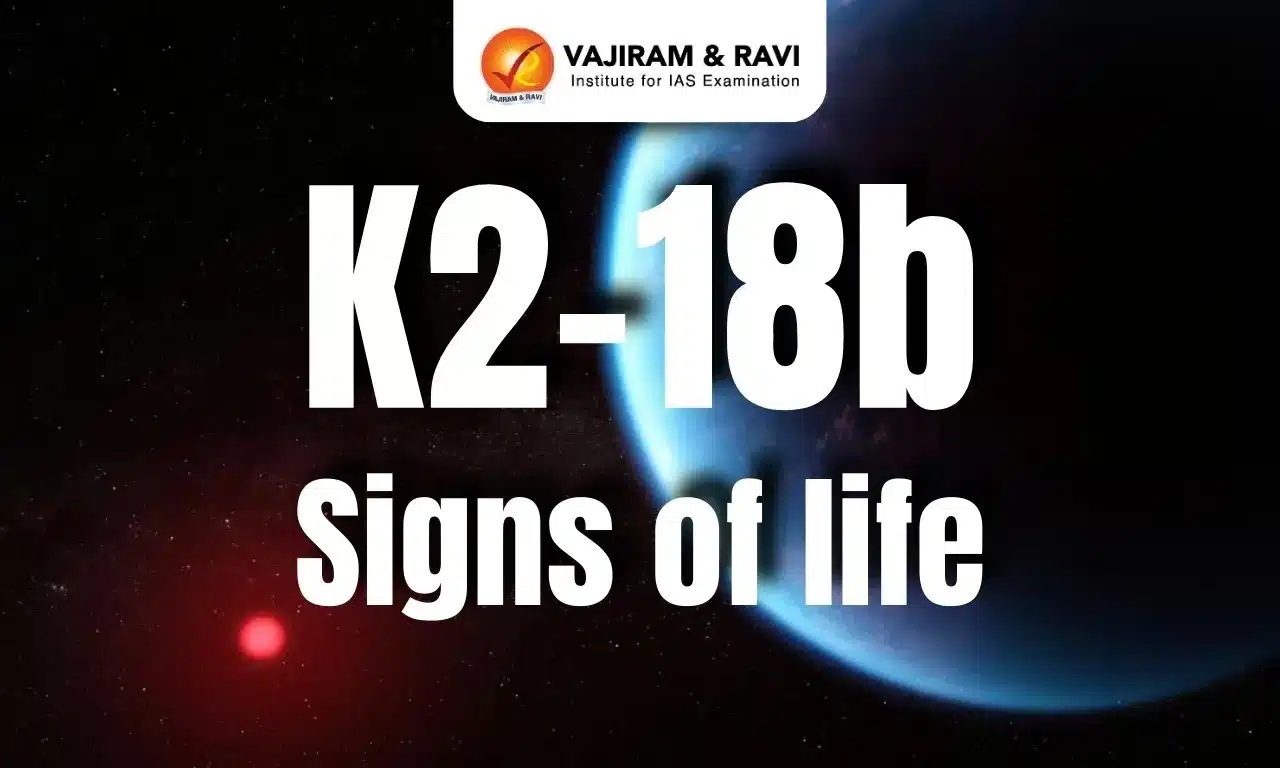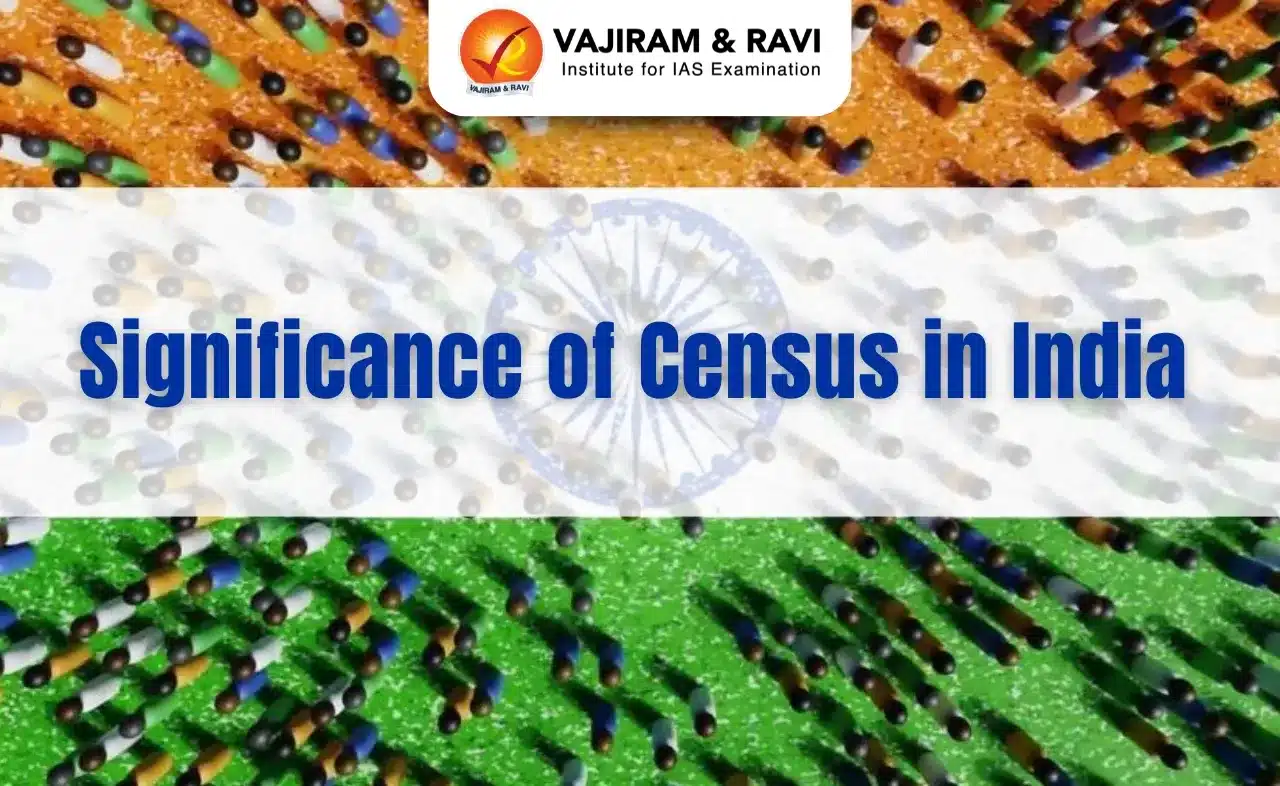What’s in Today’s Article?
- Exoplanet Latest News
- Introduction
- Understanding K2-18b and Its Discovery
- Hycean World Hypothesis and Atmospheric Composition
- The Significance of Dimethyl Sulphide (DMS)
- Caution Against Premature Conclusions
- Challenges in Confirming Life on Exoplanets
- Conclusion
- K2-18b Exoplanet FAQs
Exoplanet Latest News
- On April 17, an international research team published a paper in which it reported that the distant exoplanet K2-18b may be habitable.
Introduction
- In a significant development in space science, an international research team has reported signs that exoplanet K2-18b, located 124 light-years away from Earth in the Leo constellation, may exhibit characteristics of a habitable world.
- The recent findings, based on data from the James Webb Space Telescope (JWST), suggest the presence of potential biomarkers in its atmosphere, sparking cautious optimism within the scientific community.
Understanding K2-18b and Its Discovery
- K2-18b is a distant exoplanet discovered in 2015 by the Kepler telescope. It is about 5.2 times wider and nine times more massive than Earth.
- Orbiting its host star K2-18, the planet receives a comparable amount of stellar radiation as Earth receives from the Sun, making it a strong candidate for further habitability studies.
- In 2019, NASA’s Hubble Space Telescope detected signs of water vapour in K2-18b’s atmosphere.
- Later, in 2023 and 2024, the James Webb Space Telescope provided stronger evidence of carbon dioxide and methane, essential components in the quest to find life-supporting planets.
Hycean World Hypothesis and Atmospheric Composition
- Researchers theorize that K2-18b could be a Hycean world, a type of planet enveloped by a hydrogen-rich atmosphere and potentially hosting a liquid water ocean beneath.
- Computer simulations suggest that such worlds may possess moderate greenhouse conditions and even a stratosphere, despite their exotic environment.
- The JWST has indicated the presence of carbon-based molecules like carbon oxides and even dimethyl sulphide (DMS) or dimethyl disulphide (DMDS).
- On Earth, DMS is primarily produced by marine phytoplankton, indicating that its presence in extra-terrestrial atmospheres could point to biological activity.
The Significance of Dimethyl Sulphide (DMS)
- The detection of DMS or DMDS is considered the most exciting outcome of the K2-18b analysis.
- On Earth, DMS is almost exclusively of biological origin, released when oceanic phytoplankton decompose.
- It is also produced when bacteria break down plant matter. The detection of DMS in large quantities, up to 1,000 times higher than on Earth, suggests there may be an active production source on K2-18b’s surface.
- However, distinguishing between DMS and DMDS is complex due to their overlapping spectral signals.
- Moreover, the possibility of non-biological sources, such as volcanic eruptions or cometary chemistry, complicates direct interpretation.
Caution Against Premature Conclusions
- Despite these intriguing findings, the scientific community urges caution.
- The JWST data have limitations, including detection thresholds and reliance on computer models that may not perfectly simulate unknown atmospheric dynamics.
- There have been prior instances of premature claims in exoplanet studies.
- For instance, in 2024, researchers discovered that comet 67P/Churyumov-Gerasimenko contained DMS of abiotic origin, raising the possibility that DMS may not always be a biosignature.
- Additionally, a U.S.-based study suggested K2-18b could be a “mini-Neptune” with a gas-rich envelope, not necessarily requiring biological processes to explain its chemical composition.
- Another reanalysis published in early 2025 challenged earlier findings, claiming there is no statistically significant evidence of carbon dioxide or DMS.
Challenges in Confirming Life on Exoplanets
- Detecting potential life-supporting conditions from vast distances relies heavily on indirect evidence.
- These include signs of specific molecules, thermal conditions, and radiation levels.
- However, confirmation of extraterrestrial life would require direct detection, something that current technologies like JWST cannot provide conclusively.
- Hence, while K2-18b remains a promising candidate, claims of it being habitable must be tempered with scientific rigour and scepticism.
Conclusion
- K2-18b presents a compelling case for habitability, with its hydrogen-rich atmosphere, the presence of water vapour, and signs of carbon-based molecules.
- The potential detection of dimethyl sulphide lends further intrigue to this distant world.
- However, with conflicting studies and technological limitations, scientists continue to investigate the data with caution.
- K2-18b may or may not host life, but its study will undoubtedly enrich our understanding of planetary atmospheres and the parameters for life beyond Earth.
K2-18b Exoplanet FAQs
Q1. Where is K2-18b located?
Ans. It is located 124 light-years away in the constellation Leo.
Q2. What makes K2-18b a potential candidate for life?
Ans. It has a hydrogen-rich atmosphere and signs of water vapour, carbon dioxide, and possibly dimethyl sulphide.
Q3. What is the significance of detecting DMS on K2-18b?
Ans. On Earth, DMS is primarily produced by marine life, making it a potential biomarker.
Q4. Has K2-18b been confirmed as habitable?
Ans. No, scientists have not confirmed it as habitable; current findings only suggest possible life-supporting conditions.
Q5. What challenges exist in confirming life on K2-18b?
Ans. Instrumental limits, model uncertainties, and alternative non-biological explanations make confirmation difficult.
Source : TH
Last updated on June, 2025
→ UPSC Notification 2025 was released on 22nd January 2025.
→ UPSC Prelims Result 2025 is out now for the CSE held on 25 May 2025.
→ UPSC Prelims Question Paper 2025 and Unofficial Prelims Answer Key 2025 are available now.
→ UPSC Calendar 2026 is released on 15th May, 2025.
→ The UPSC Vacancy 2025 were released 1129, out of which 979 were for UPSC CSE and remaining 150 are for UPSC IFoS.
→ UPSC Mains 2025 will be conducted on 22nd August 2025.
→ UPSC Prelims 2026 will be conducted on 24th May, 2026 & UPSC Mains 2026 will be conducted on 21st August 2026.
→ The UPSC Selection Process is of 3 stages-Prelims, Mains and Interview.
→ UPSC Result 2024 is released with latest UPSC Marksheet 2024. Check Now!
→ UPSC Toppers List 2024 is released now. Shakti Dubey is UPSC AIR 1 2024 Topper.
→ Also check Best IAS Coaching in Delhi






















